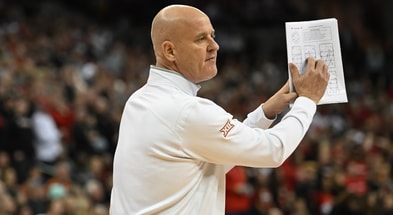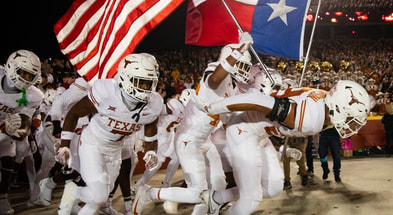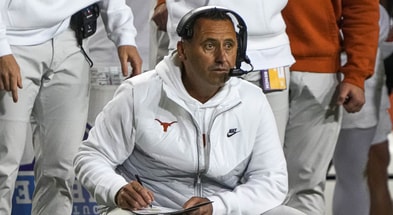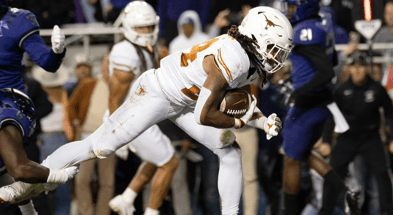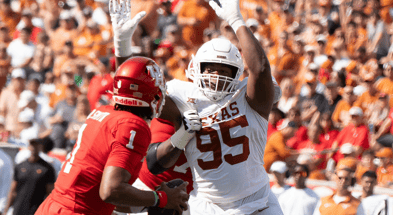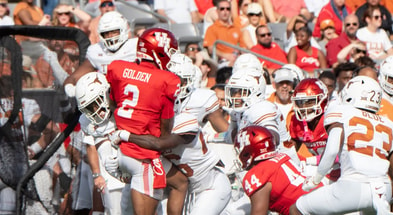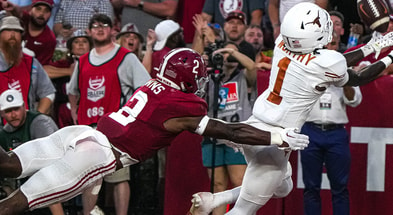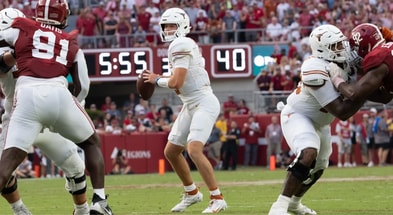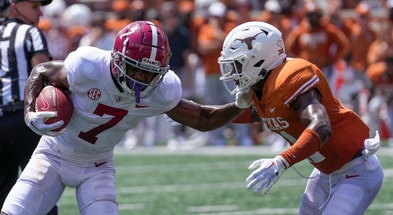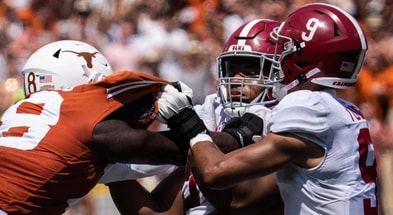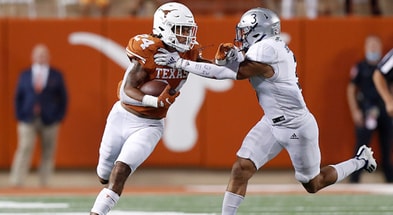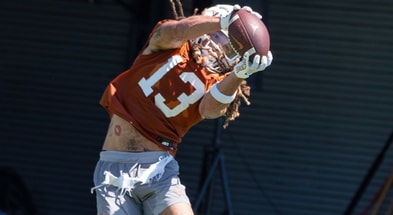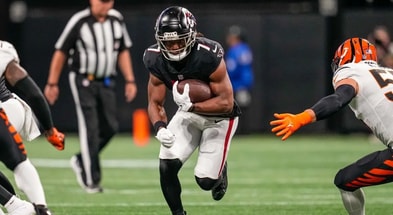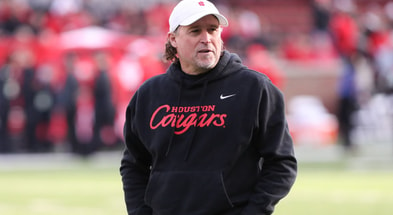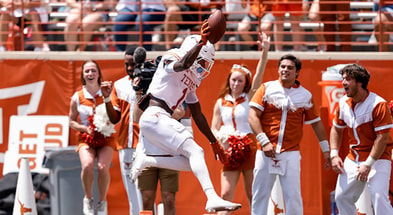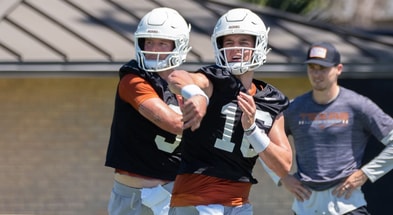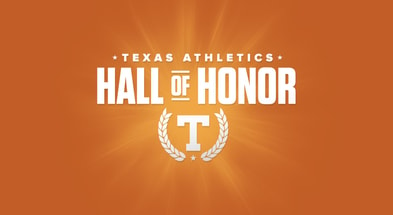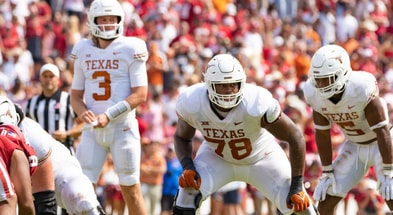Inside the gameplan: Tested by Tech
Last year Texas’ Big 12 opener against Texas Tech was only the second game of the season and a horrifying wake up call for the team. You may recall the game seemed to slip away from the Longhorns when SaRodorick Thompson ran for a 78-yard score to make it 56-41 Red Raiders with about three minutes on the clock.
Then Sam Ehlinger marched down the field in about 34 seconds, Malcolm Epps secured perhaps the biggest grab of his career on the ensuing onside kick, and then Ehlinger flew down the field again to tie up the game and force overtime where Texas prevailed.
Texas has already had their Week 2 wake up call for 2021 on the road against Arkansas, so this game should be one where everyone goes into the game with open eyes about who Texas is and what needs to be done to win games. If they can’t beat the Red Raiders, something is rotten on this team and personnel changes will need to be made ahead of the @TCU, Red River Shootout two-game stretch which follows.
Man in the middle
This game will be the closest yet Casey Thompson has come to a real challenge in a big game. The Red Raiders can score on a different level than Colorado and put pressure on you to keep up. They’ll also be only the second team to ever devise a gameplan for Thompson and the first was Rice.
However, Texas Tech is still terrible at defense.
They have a lot in the playbook, it’s very close to the same system Todd Orlando inherited from Texas Tech head coach Matt Wells at Utah State, but they don’t run more than half of it cleanly (if that). Fatal flaws for Tech include lacking impact players along the defensive line and building secondaries every season with late-coming transfers who have little time to master a system and develop chemistry.
They can’t really rush the passer without blitzing, so they’ve quickly settled into an identity as a cover 1 defense who create a variety of four and five man fronts after the snap by blitzing one or two linebackers to join the 3-down linemen. Their reliance on man coverage isn’t about the abilities of their defensive backs in man so much as their inability to play zone together without busts.
So how does Texas handle a defense which run blitzes linebackers every other snap and plays man coverage? I suspect Steve Sarkisian will have a lot up his sleeve, but an obvious remedy is the mesh play, seen here against Rice.
Mesh is great for attacking man coverage, as is the scramble, combined they can tend to open up this running lane if the wheel and shallow carry away defenders. The middle hook route might have been open here, the timing and spacing from Texas here wasn’t awesome, but the scramble guaranteed the chains moved and proved a good decision by Thompson.
I’m pretty skeptical of Tech’s ability to have a disciplined pass-rush against Thompson. They may spy him though and he should be aware of their linebackers in the middle of the field, particularly Colin Schooler:
Tech may try to test Texas’ ability to pick up run blitzes and stunts up front, but their defensive coordinator may also rush three and spy with Schooler a fair amount. Particularly on third downs where Thompson is happy to grab first downs with his legs if you allow it.
Either way, outside zone should be there against this defense, especially as the game wears on and their D-line tires of slanting into bigger people. Tech’s pass-rush also tends to disappear as a consequence of the same factor.
A 3-down front which routinely slants into 4-down fronts while adding linebackers is just the sort of scheme you can bust with outside zone calls. Tech has yet to face a particularly good rushing attack this season but was torched last year when Oklahoma State got into a double tight end formation and ran outside zone repeatedly.
Space warfare
Count me skeptical about Tyler Shough and the Texas Tech passing game. The Oregon transfer does have a big arm and maybe the best outside receiver in the Big 12 in Erik Ezukanma. Look at this absurd play against Houston in the season opener:
Just like they drew it up…
Most of the time when Ezukanma is creating highlight reels he’s Moss’ng smaller cornerbacks (Easy E is 6-foot-3, 220 pounds) on deep routes. Ezukanma is a physical menace, one of the most fearsome skill players in the Big 12. This will be a good test case of whether Pete Kwiatkowski will match his cornerbacks on specific receivers or not, the obvious play would be to keep bigger Josh Thompson on him.
Aside from throwing it at Ezukanma, where Texas Tech is consistently good is running the ball downhill with gap and inside zone schemes. They have a good interior line and a strong blocking tight end in Travis Koontz. Tahj Brooks opened the season as their main back due to an injury to Thompson and he has 35 carries for 284 yards at 8.1 ypc with four touchdowns.
There was a lot of excitement around Shough joining this team with his physical tools but I’d argue the addition of TCU transfer T.J. Storment was perhaps a bigger factor, this offensive line can’t protect worth a lick without him and he allows them to go 6-foot-6, 320 pounds, 6-foot-6, 320 pounds, and 6-foot-6, 310 pounds from left tackle to center.
So this team is really built around the smashmouth run game. The FIU game was the first time on the year Shough attempted over 30 passes. FIU approached the Raiders like this:
I agree with focusing on the Raider run game but your safeties should probably make sure people don’t just run by them.
Tyler Shough needs the run game to be rolling, if you don’t give him wide open spaces to throw to on RPOs or play-action he doesn’t thrive when reading the middle of the field. Stephen F. Austin (yes) gave him a lot of issues by disguising their looks and even got a pick-6 for their efforts. He likes to throw to predetermined spots and (like many strong-armed quarterbacks) will wait for a route to open up and trust his arm to make the play rather than throwing with anticipation.
So how do you monkey wrench the Tech offense? There’s two ways to do it and I could see Texas blending both approaches. One way is to play match coverage to keep numbers in the box and force the Raiders to protect Shough and beat coverage. Another way would be to repeat the Arkansas gameplan, playing more two-high with a lot of replacement blitzes and daring the Red Raiders to work their way down the field without committing busts or turnovers.
I’m guessing they’ll lean on the Arkansas method but with some timely match 3 calls to bring a safety down and choke out the run game. The advantage of the quarters approach in this game is having safeties on the hash marks to help with Ezukanma. The surest way to lose this game is to allow him to beat you. The danger of the quarters approach is in the run defense, it’s harder to play great run defense from the Cover 2 shell of their quarters coverage unless they’re really dominating inside at defensive tackle.
This game will be a great test of Texas’ interior D-line. Does PK trust them to anchor the defense well enough to play two-deep? Or does he deem the Tech run game too dangerous?
With either approach, Texas should mix in more blitzes like the one they busted against Arkansas (assuming they run them cleanly in practice).
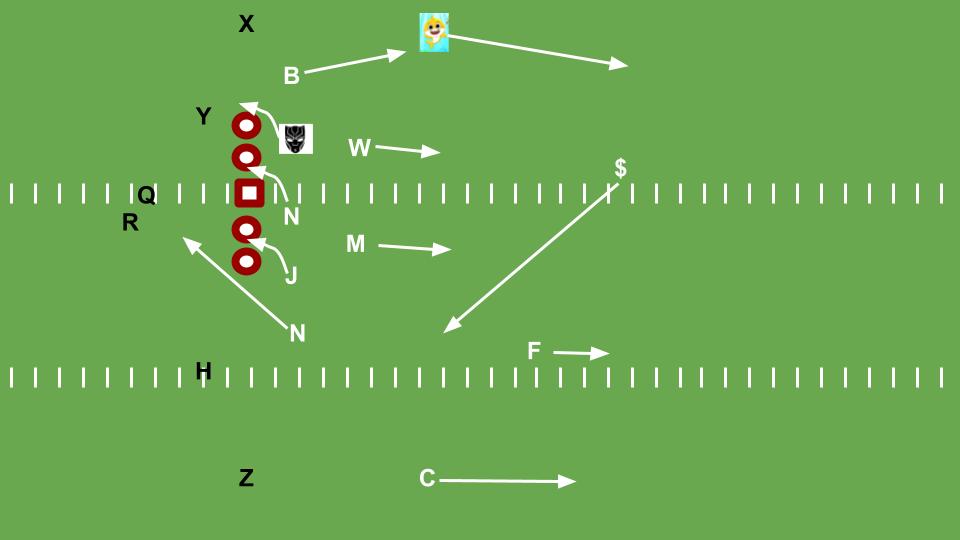
There are game-changing turnovers to be had by forcing Shough to process the field under duress. PK has a nice collection of replacement blitzes which add a defensive back or linebacker to the front, drop an outside linebacker, and play the same match 3 or quarters scheme behind with seven in coverage.
These are likely to be brutal on Big 12 quarterbacks and offenses. Teams like Tech rely on spread spacing and run/pass conflicts to clear the picture for their quarterback and isolate star skill players in favorable settings and matchups. It’s tougher to execute against a team dropping seven or eight who don’t give away as much space to work in and harder still if the seven who are dropping aren’t static.
A team which can play sound defense without non-athletes or confused defenders in the back seven and at least bother the passer with a four-man rush is generally pretty effective in the Big 12. Simply rushing the passer and staying sound on the back end is often difficult enough against spread spacing and run/pass conflicts. Doing so while altering who is where and forcing the offensive line to sort out who’s got who and the quarterback to discern the coverage in the chaotic moments after the snap can be absolutely lethal.
If Texas can get there, they should make easy work of the Red Raider offense. Alternatively, if they can use stunts and movement to get a four-man rush while dropping the traditional back seven into coverage, they should also have a solid day. TCU mostly does things in that fashion and they tend to have pretty good results.
Overall this game should be a terrific test of Texas’ baseline competency in beating up on standard Big 12 teams. Texas Tech is a classic, Big 12 example of startle display, like the cat who puffs his hair out and arches their back. They’ll gameplan very carefully to make their own strengths (run blitzing linebackers, run/pass conflicts in space) appear overpowering while covering for weak spots (poor pass protection, weak defensive line). Can Texas gameplan to dismantle a defense with precision to the point of being able to win if this turns into a shootout? Will they be able to either present a sound defense against Tech or successfully attack their weak spots and cripple the offensive machinery? Or could they play complementary football in all three phases and control the game?
Positive answers would portend a strong season in this league. Tech probably isn’t one of the better teams but they are indicative of what else is to come.
